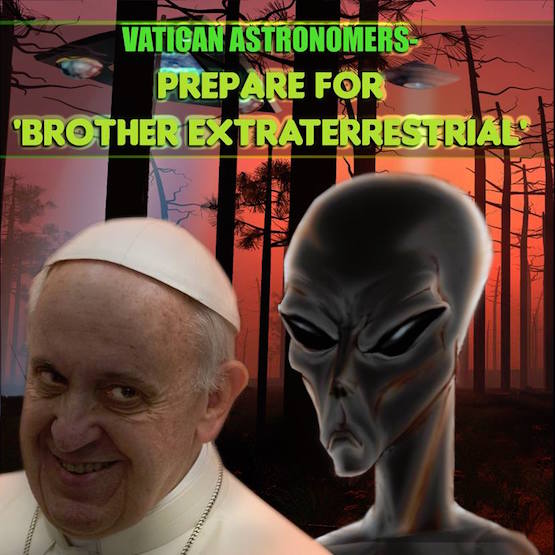STORY AT-A-GLANCE
> A psychological condition of society known as “mass formation” is a condition for totalitarianism. Under mass formation, a population willingly sacrifices their freedom
> The central condition for mass formation to occur is a lack of societal bonding. In other words, social isolation on a mass scale, which is precisely what the lockdowns were all about. But even before the pandemic, social isolation was at a historical high
> The second condition is that a majority of people must experience life as meaningless and purposeless. The third condition is widespread free-floating anxiety and free-floating discontent. This refers to discontent and anxiety that have no apparent or distinct causes
> The fourth condition is free-floating frustration and aggression, which tends to naturally follow the previous three. Here, again, the frustration and aggression have no discernible cause
> Once these four conditions are widespread, mass formation can occur, which allows for totalitarianism to rise and thrive. A key strategy to break mass formation and prevent totalitarianism is for dissenters to join together as one large group, thereby giving fence-sitters who are not yet fully hypnotized an alternative to going along with the totalitarians. Another is to loudly speak out against the totalitarian regime, as this is how atrocities are limited
In the video above, Mattias Desmet, professor of clinical psychology at Ghent University in Belgium, reviews the societal conditions under which a population ends up willingly sacrificing their freedom.
Desmet, who also has a master’s degree in statistics, discovered peculiar anomalies in statistical analyses done during the COVID pandemic, which made him realize our global society is starting to enter a “mass formation” state, a type of “collective hypnosis” required for the rise of a totalitarian regime.
In this Aubrey Marcus podcast interview, Desmet reviews the step-by-step formula that results in this collective hypnosis, and how this formula has been deployed on the global population over the past two years.
Needless to say, he warns us about continuing down this path, and provides solutions that we can take, both on an individual and collective basis, to prevent the loss of freedom that will surely follow if we do nothing.
Nonsensical Modeling
Around the end of February 2020, Desmet started looking at case fatality rates and other statistics, quickly realizing that there was something seriously wrong with the models presented to the public and used as justification for shutting down “nonessential” businesses and telling everyone to stay at home.
The models were greatly exaggerating the threat of SARS-CoV-2, and by the end of May 2020, this was “proven beyond doubt.” For example, the Imperial College in London predicted that if Sweden did not lock down, 80,000 people would be dead by the end of May 2020. Well, Sweden opted not to lock down, and by the end of May only 6,000 people had died with a diagnosis of COVID-19.
Strangest of all, Desmet says, was that everyone kept saying the coronavirus countermeasures were based on mathematical models and science, yet “when it was proven beyond doubt that the initial models were completely wrong, the measures continued, as if nothing was wrong and the models were right.”
Clearly, then, modeling and science were not foundational or even part of the equation at all. This, Desmet says, “was a strong sign that there was something going on at the psychological level that was really powerful.”
Another tipoff that something was really wrong was the fact that none of our political leaders were taking into account the collateral damage of their countermeasures. There was no cost-benefit/risk-reward analysis for any of the countermeasures.
The World Health Organization did warn that the measures might result in excess deaths from starvation. Yet at no time did we ever see a mathematical model that took into account both sides of the coin — the death toll from the virus, and the collateral damage of the countermeasures. And without such an analysis, we could not assess whether the countermeasures might be more harmful than the virus.
Anytime you consider a public health measure, a cost-benefit analysis is essential. You cannot make a sensible decision without it. Yet here, such basics were ignored as if the collateral damage was inconsequential.
The Four Base Conditions for ‘Mass Formation’
What psychological dynamics and processes might be responsible for this apparent blindness? After a couple of months, Desmet finally realized what was going on. Society was (and still is) under the spell of a mass hypnosis, a psychological process known as “mass formation” that arises in society when specific conditions are met.
The central condition is a lack of societal bonding. In other words, social isolation on a mass scale, which is precisely what the lockdowns were all about. We were all told that any contact with others, including members of our own family, could be a death sentence.
I’ve heard of people who for over a year have not met with a single person, remaining locked in their homes the entire time, for fear of contagion. But social isolation was a widespread problem even before the pandemic. Marcus cites a survey, which found 25% of respondents didn’t have a single close friend. What’s more, the loneliest age group were young adults, not seniors, as typically suspected.
So, even before the pandemic, Western societies were suffering from a lack of community, which is a key condition for “mass formation” syndrome to emerge in the first place.
The second condition is that a majority of people must experience life as meaningless and purposeless. Desmet cites research showing that half of all adults feel their jobs are completely meaningless, providing no value to either themselves or others.
In another poll, done in 2012, 63% of respondents said they were “sleepwalking” through their workdays, putting no passion into their work whatsoever. So, condition No. 2 for mass formation hypnosis was also fulfilled, even before the pandemic hit.
The third condition is widespread free-floating anxiety and free-floating discontent. Free-floating anxiety refers to anxiety that has no apparent or distinct cause. If you’re in the jungle and find yourself chased by a lion, your fear and anxiety have a natural, easily-identified cause — the lion.
However, when you are socially disconnected and feel your life has no meaning, then a free-floating anxiety can emerge that is not connected to a mental or physical representation of a specific threat. Judging by the popularity of antidepressants and other psychiatric drugs, condition No. 3 was also fulfilled long before the pandemic.
The fourth condition is free-floating frustration and aggression, which tends to naturally follow the previous three. Here, again, the frustration and aggression have no discernible cause.
When Conditions Are Met, Mass Formation Emerges
When these four conditions are fulfilled by a large enough portion of society, they are ripe for mass formation hypnosis. All that’s needed now is a story in which the source or cause of the anxiety is identified and spelled out, while simultaneously providing a strategy for addressing and neutralizing that cause.
By accepting and participating in whatever that strategy is, people with free-floating anxiety feel equipped, finally, with the means to control their anxiety and avoid panic. They feel like they’re in charge again.
Interestingly, when this happens, people also suddenly feel reconnected with others, because they’ve all identified the same nemesis. So, they’re joined together in a heroic struggle against the mental representation of their anxiety. This new-found solidarity also gives their lives new meaning and purpose.
Together, this connection, while based on a false premise, acts to strengthen the psychological disconnect from reality. It explains why so many have bought into a clearly illogical narrative, and why they are willing to participate in the prescribed strategy — “even if it’s utterly absurd,” Desmet says.
“The reason they buy into the narrative is because it leads to this new social bond,” he explains. Science, logic and correctness have nothing to do with it.
“Through the process of mass formation, they switch from the very painful condition of social isolation to the opposite state of maximal connectedness that exists in a crowd or a mass.
That in and of itself leads up to a sort of mental intoxication, which is the real reason people stick to the narrative, why people are willing to go along with the narrative, even, as we said, it is utterly wrong, and even if they lose everything that is important to them, personally.”
These losses can include their mental and physical health, their homes, livelihoods and material well-being. None of it matters when you’re under the hypnotic spell of mass formation. And this, Desmet says, is one of the most problematic aspects of this psychological phenomenon. Masses of people become self-destructive through their myopic focus.
19th Century Mass Formation
Gustave Le Bon, a French social psychologist renowned for his study of crowds once said:
“The masses have never thirsted after truth. They turn aside from evidence that is not to their taste, preferring to deify error, if error seduce them. Whoever can supply them with illusions is easily their master; whoever attempts to destroy their illusions is always their victim.”
Le Bon’s book, “The Crowd: A Study of the Popular Mind,”1 takes a deep-dive into the characteristics of human crowds and how, when gathered in groups, people tend to relinquish conscious deliberation in favor of unconscious crowd action.
He warned that if society didn’t take heed and ward of social isolation and the anti-religious idea that life has no purpose, we would end up in a state where mass formation would become the norm. These psychologically damaged people would take over, which is precisely what happened.
A key example is the Nazi regime. Desmet points out that while we typically think of dictatorships arising from the use of brute force and fear, the Nazi regime — and the leadership we’re faced with right now — came into power on the back of this deep psychological phenomenon known as mass formation.
People WILLINGLY participated in the Nazi atrocities because of the psychological state society was in, the mass formation phenomenon, not because they feared their leader.
Key Difference Between Dictatorship and Totalitarianism
So, it’s important to realize that classical dictatorships and totalitarianism arise from different causes. As a general rule, in a classic dictatorship, the dictator becomes milder and less aggressive once dissident voices, his opposition, are silenced. Once he has seized complete power, he doesn’t need to be aggressive anymore and can resort to other means to maintain control.
In a totalitarian state, the exact opposite occurs. This is crucial for us to understand, because in a totalitarian society, once the opposition is silenced, that’s when the state commits its greatest and cruelest atrocities.
An example of this is Stalin’s purification scheme in the 1930s, which led to the death of about 80 million people in a single decade. The mid-30s is also when the Nazi regime began its insane cleansing, which resulted in the Holocaust. Both occurred after the vocal opposition had been quenched.
We’re now at another watershed moment in history, where the opposition to the pandemic madness is being silenced. If we want humanity to survive and not succumb to global totalitarianism, we must keep speaking against it, because when we stop, THAT’S when the real atrocities will begin. In other words, we ain’t seen nothing yet. The worst is still to come — if we fall silent.
Here’s another important point. Totalitarians don’t stop committing atrocities once the opposition is vanquished. It merely expands to new groups. Desmet recounts how Stalin switched from one scapegoat to the next, as he kept running out of groups to blame and had them killed off. Eventually, he ended up murdering half of his Communist Party members, even though most had done nothing wrong and were loyal to him.
That’s something to ponder in our present situation. Right now, “anti-vaxxers” are the opposition the totalitarian regime seeks to destroy. Once there are no more “anti-vaxxers,” say, theoretically, that everyone in the world got the shot, the opposition to be done away with would become some other group.
So, if you’re “vaccinated” and up on all your boosters right now and are cheering on the crusade against those who don’t want the shot, know that it’s only a matter of time before it’s your turn to be victimized over something.
The Tragic End That Awaits All Mass Formation Societies
The fate of those who succumb to mass formation and embrace totalitarianism is particularly tragic, in a sense, because of another curious thing that occurs. People under its spell often end up agreeing that they deserve to die and willingly go to their death. This, Desmet says, is what happened with many of Stalin’s party members who were given death sentences for no apparent reason.
As noted by Marcus, this is basically menticide, the killing of the mind. The psychological process of menticide so degrades the mental faculties that rational thinking is no longer possible, making you profoundly gullible. In this state, you’ll buy into any narrative without critical thinking.
Mass formation also always ends up creating more of the conditions that allowed it to emerge in the first place. So, in the end, people who are under mass formation hypnosis will feel greater social isolation than ever before, less meaning and purpose in life, and more free-floating anxiety and free-floating aggression than before.
Mass formation also erases individuality. The group becomes all-important and the individual inconsequential. Hence being told you, your parents or children deserve or need to die for the betterment of society is acceptable and agreeable.
“Everyone becomes equally stupid, essentially,” Desmet says. “It doesn’t matter how smart or intelligent they were before. They lose all capacity for critical thinking, they lose all individual characteristics.”
Applied to today, this is shockingly relevant. It helps explain how and why parents are willing to line up their children for an experimental injection that can disable or kill them. “Totalitarianism is a monster that ALWAYS devours its own children,” Desmet says.
Mass Formation in Action
Another important point is that, typically, only 30% of people in a totalitarian society are actually under the hypnotic spell of mass formation. It seems greater, but they’re actually in a minority.
However, there’s typically another 40% that simply go along with the program, even though they’re unconvinced. They don’t want to stick out by going against the prevailing current. The remaining 30% are not hypnotized and want to wake the others up.
The so-called Ash experiments clearly demonstrated that very few people, only 25%, are willing to go against the crowd, no matter how absurd and obviously wrong the crowd’s opinion is. Two-thirds of people are willing to go along with “idiocracy.”
Time and again, mass formation events and experiments show us there are three groups of people: those who become spellbound and actually believe that the wrong answer is the right one; those who know the answer is wrong, but dare not tell the truth so they agree with what they know to be false; and those who know the answer is wrong and say so.
How to Break Mass Formation
All of this points to what the answer is. According to Desmet, what dissidents need to do is join together to form one large group. This gives the largest, 40% group — the fence-sitters who only go along with the program because they’re afraid of being ostracized — an alternative social bonding platform.
Most of them are likely to join the dissident anti-totalitarian group rather than follow the totalitarian mindset that they don’t fully agree with. At that point, the mass formation is done. The totalitarian state is finished because the neutral fence-sitters, which allowed for mass formation to take root and grow, are now no longer participating in that process. And without mass formation, a totalitarian takeover cannot succeed.
Secondly, we must continue to speak out — LOUDLY. Speaking out can help minimize the number of people who get hypnotized. It can also wake some up who already are under the mass formation spell. According to Desmet, speaking out has also been shown to limit the atrocities committed.
“In my opinion, it is not an option to stop speaking,” he says. “It’s the most important thing we can do.”
It’s not easy. As discussed by Marcus and Desmet, the totalitarian regime has the benefit of being able to control the narrative through a centralized media. Not surprisingly, mass media is a key tool for the successful creation of mass formation.
A third action item is creating parallel structures. The power of this strategy was demonstrated by Vaclav Havel, a political dissident who eventually became the president of Czechoslovakia. A parallel structure is any kind of business, organization, technology, movement or creative pursuit that fits within a totalitarian society while being morally outside of it.
Once enough parallel structures are created, a parallel culture is born that functions as a sanctuary of sanity within the totalitarian world. Havel explains this strategy in his book, “The Power of the Powerless.” As noted by Desmet, totalitarianism will always self-destruct in the end. The psychological underpinnings are so self-destructive that the system falls apart. That’s the good news.
The bad news is a totalitarian system can survive for long periods of time before petering out, and there tend to be few survivors at the end. That said, Desmet believes this new global totalitarianism is more unstable than regional dictator-led totalitarian systems, so it may self-destruct faster. So, the key is to survive outside the totalitarian system while we wait for it to self-destruct.
However, we must still dissent in word and deed, in order to limit the atrocities and mitigate the damage.
Ultimately, as in medicine, preventing totalitarianism is far easier than trying to break free later. To do that, we need to prevent the four root causes of mass formation in society: social isolation, purposelessness, free-floating discontent/anxiety and free-floating frustration/aggression. This will be the task of those who remain once this global totalitarianism experiment fails and falls.


















